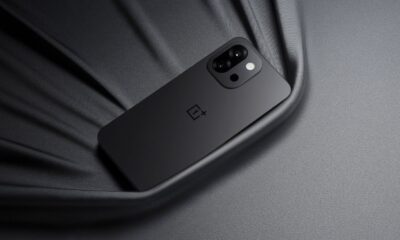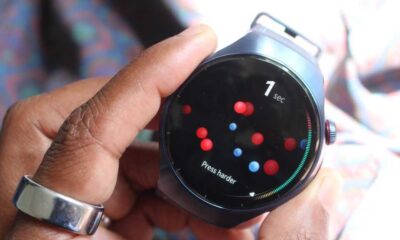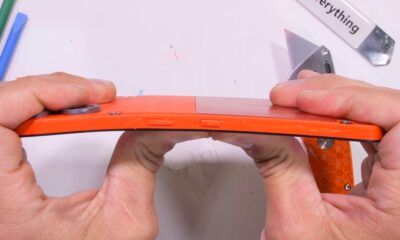Gadgets
Nothing Phone (3a) vs Xiaomi Redmi Note 14 Pro 5G: Which is Best?
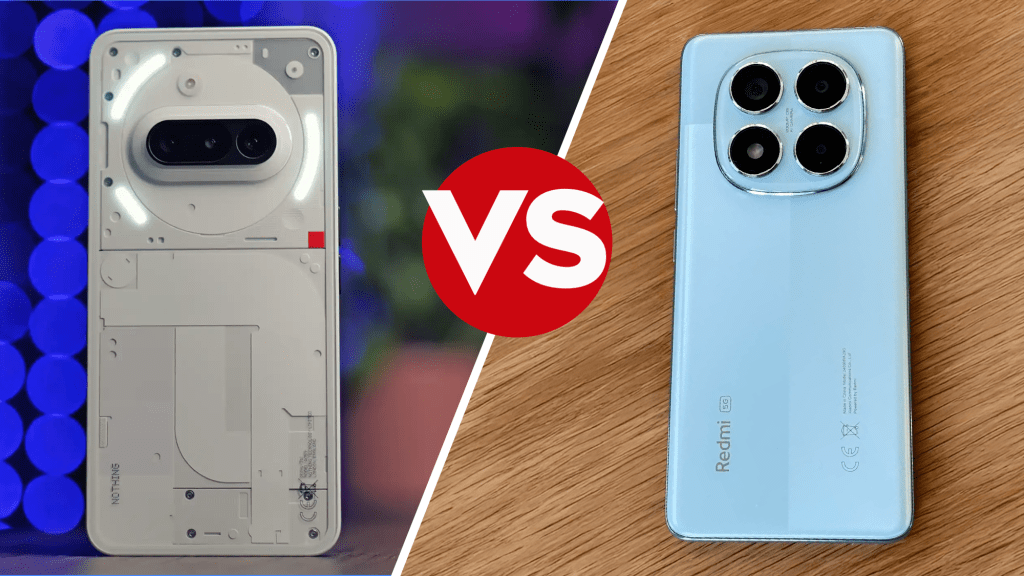
If you’re in the market for an affordable mid-range phone with premium features, the Nothing Phone (3a) and the Xiaomi Redmi Note 14 Pro 5G are two of the strongest contenders.
Both bring a lot to the table, but some key differences could make or break your decision.
Let’s take a closer look at major distinctions between these devices and what they mean for you so you can choose the right phone.
Design & Build
Nothing has quickly built a reputation on eye-catching, unique designs, and the Phone (3a) is no exception. With its transparent back, Glyph lighting system, and cyberpunk aesthetic, it’s a phone that demands attention.
While mostly plastic, it still feels premium, and the IP64 rating ensures some protection against dust and splashes.
The Redmi Note 14 Pro 5G, on the other hand, is more traditional but still stylish. It opts for a sleek, curved body with a glossy opalescent finish that changes under light.
The squircle camera module is centrally placed, which makes for a symmetrical look, though it can be a bit awkward for photography.
Crucially, it boasts an IP68 rating, offering much better dust and water resistance than the Nothing’s offering. It’s also lighter at 190g compared to the Phone (3a)’s 201g, making it slightly more comfortable to hold over long periods.
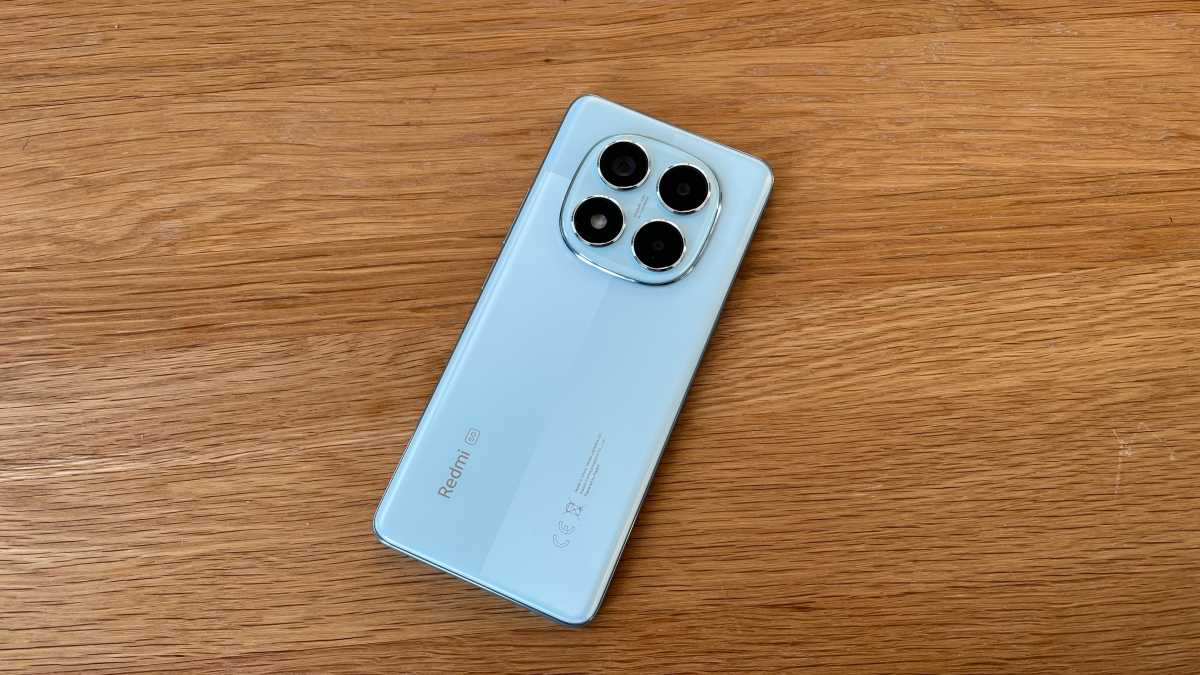
If durability is a priority, the Note 14 Pro takes the edge with its superior water resistance and Gorilla Glass Victus 2 protection. But if you value a phone that looks and feels completely different from anything else on the market, the Phone (3a) is the clear winner.
Cameras
The camera systems on these two phones take very different approaches. The Redmi Note 14 Pro 5G wows on paper with its 200Mp main sensor, complete with OIS and AI-enhanced image processing.
This translates to exceptional detail, particularly in well-lit conditions, and the night mode does a solid job of brightening low-light shots without making them look artificial. However, its 8Mp ultrawide and 2Mp macro cameras are nothing special, with the latter being borderline redundant.
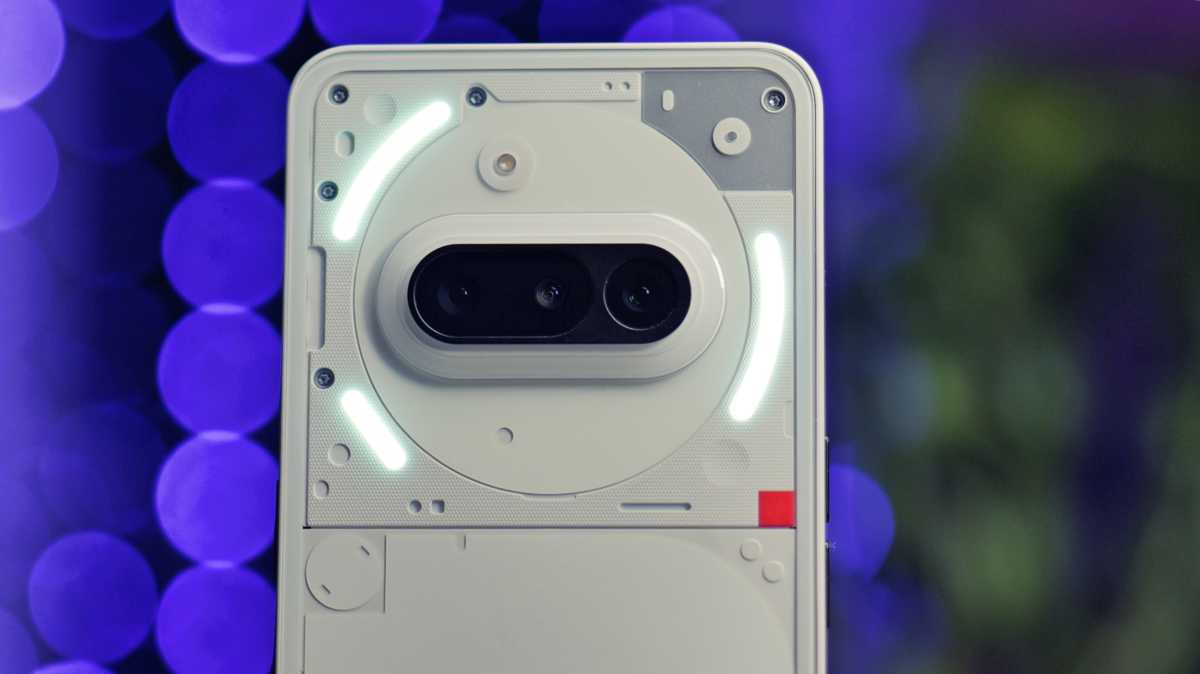
The Phone (3a) takes a more balanced approach with its triple-camera setup. The 50Mp main sensor is supported by a 50Mp 2x telephoto, offering greater flexibility than Xiaomi’s setup. However, the ultrawide lens is a weak 8Mp, and it lacks autofocus.
The Glyph lighting system doubles as a soft fill light, which is a fun touch for creative photography, but the overall image processing can sometimes be a bit too contrast-heavy.
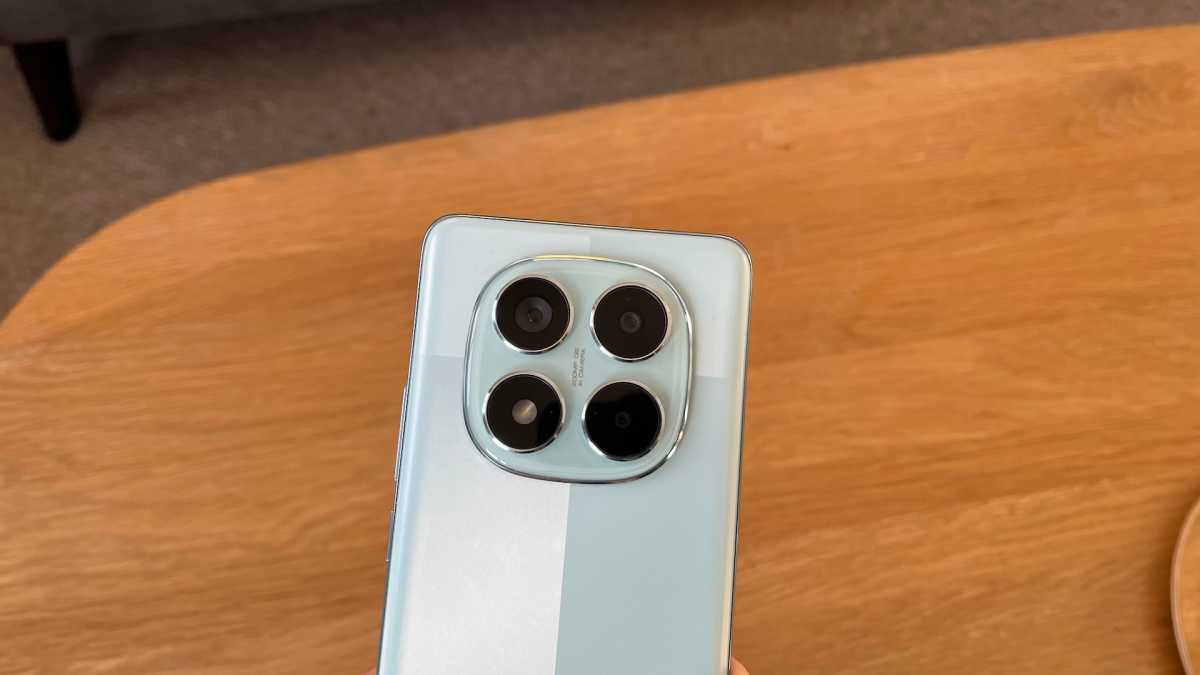
For sheer megapixels and detail, the Note 14 Pro takes the lead and is the better phone for main camera results.
But the Phone (3a) wins in versatility with its telephoto lens. If zooming is more important to you than sheer resolution, Nothing’s model is the better pick.
Performance & Software
The Phone (3a) is powered by the Snapdragon 7s Gen 3, while the Redmi Note 14 Pro 5G runs on the Dimensity 7300 Ultra.
Both are solid mid-range chips, but the Snapdragon generally edges out in efficiency and sustained performance.
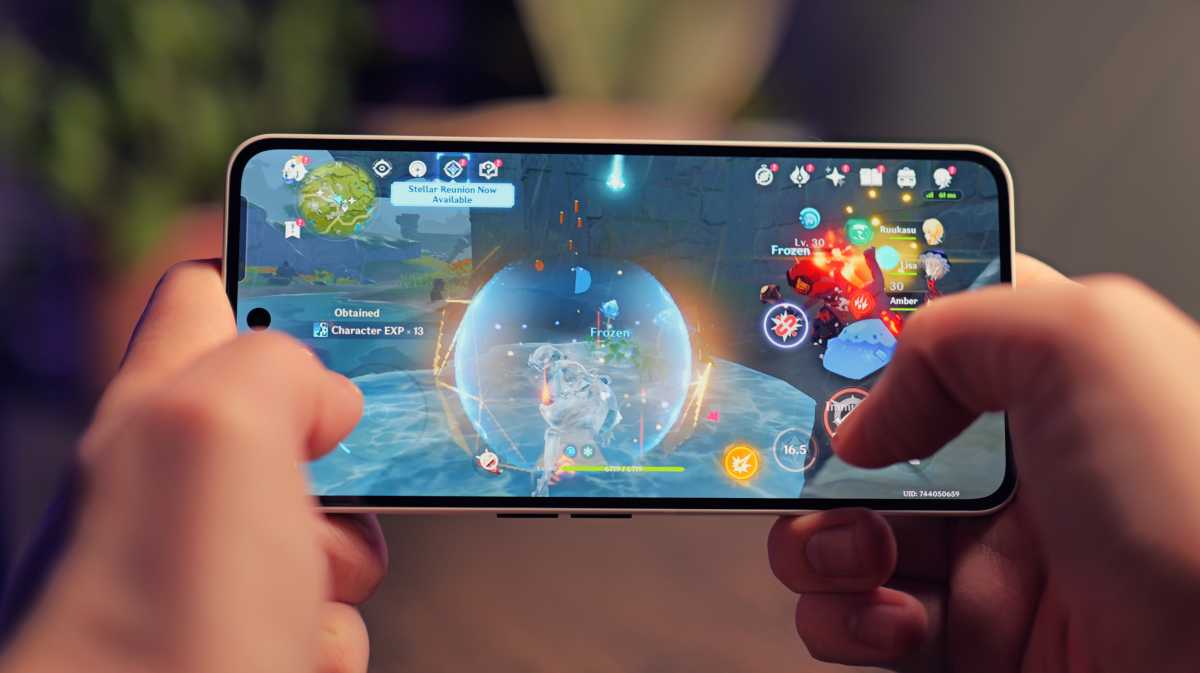
The Nothing OS 3.1 is a key selling point, offering a bloat-free, super-smooth Android 15 experience with a unique aesthetic. It also comes with six years of software support, which is a great promise in this price range.
Xiaomi’s HyperOS (built on Android 14) is less visually distinctive and comes with some pre-installed apps, though it’s still a responsive experience. Xiaomi promises three years of Android updates and four years of security patches, which is decent but not quite on par with Nothing’s commitment.
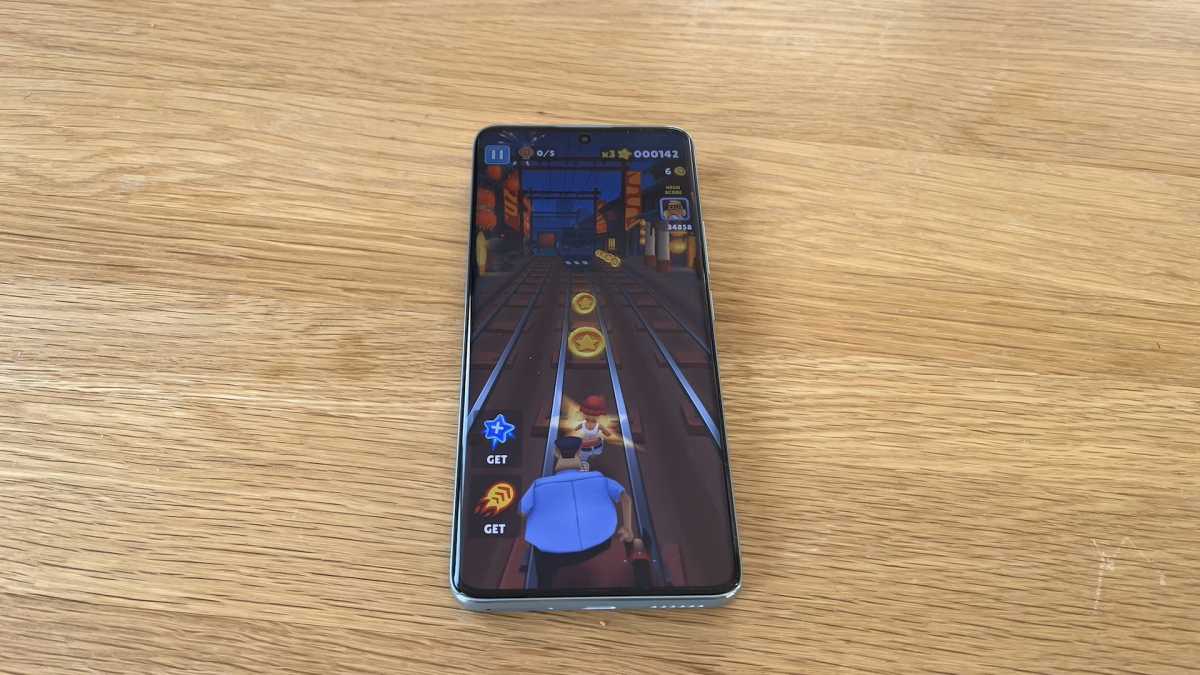
If you want a near-stock, visually striking Android experience with longer support, the Phone (3a) is the winner. If you don’t mind a slightly heavier Android skin and are drawn to Xiaomi’s ecosystem, the Note 14 Pro will serve you well.
Other differences
Elsewhere, the Note 14 Pro has a sharper 1.5K resolution (2712 x 1220) compared to the Phone (3a)’s 1080p panel. However, both max out at 3000 nits and 120Hz refresh rate, making them similarly bright and smooth.
It also has a slightly larger 5110mAh battery, compared to the Phone (3a)’s 5000mAh cell, and includes a 45W charger in the box, whereas Nothing makes you buy one separately.
The Phone (3a) will get you from fully dead to around 70% charged in just half an hour, while the Note 14 Pro will reach slightly lower 64% in the same time – but that’s a minimal difference.
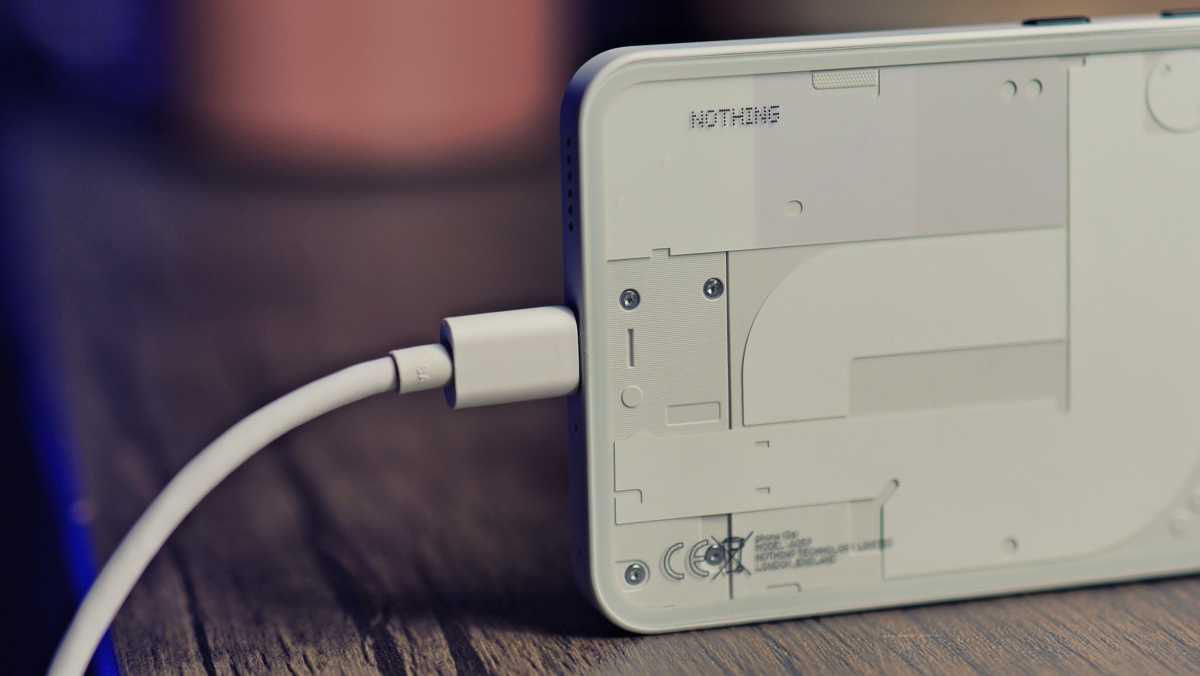
Lastly, both phones have stereo speakers, but the Note 14 Pro’s are tuned with Dolby Atmos for a richer sound experience.
Price & Availability
The Nothing Phone (3a) starts at £329 for the 8GB/128GB variant in the UK and goes up to £379/$379 for the 12GB/256GB model in both the UK and US. The phone is available to purchase outright on Nothing’s website.
The Xiaomi Redmi Note 14 Pro 5G is slightly cheaper at £299 for the 8GB/256GB model, making it a strong value pick. You can buy it directly from the Xiaomi’s website.
However, as with previous entries in the Redmi series, the Note 14 Pro 5G isn’t available in the US.
Verdict
For most people, the Nothing Phone (3a) edges ahead with its unique design, cleaner user interface, and longer software support.
But if you’re all about photography and don’t mind Xiaomi’s software quirks and you like the design, the Redmi Note 14 Pro 5G is a solid alternative at a slightly lower price.
-

 Destination8 months ago
Destination8 months agoSingapore Airlines CEO set to join board of Air India, BA News, BA
-

 Breaking News9 months ago
Breaking News9 months agoCroatia to reintroduce compulsory military draft as regional tensions soar
-

 Tech News12 months ago
Tech News12 months agoBangladeshi police agents accused of selling citizens’ personal information on Telegram
-

 Gadgets3 months ago
Gadgets3 months agoSupernatural Season 16 Revival News, Cast, Plot and Release Date
-

 Productivity11 months ago
Productivity11 months agoHow Your Contact Center Can Become A Customer Engagement Center
-

 Breaking News10 months ago
Breaking News10 months agoBangladesh crisis: Refaat Ahmed sworn in as Bangladesh’s new chief justice
-

 Gadgets3 weeks ago
Gadgets3 weeks agoFallout Season 2 Potential Release Date, Cast, Plot and News
-
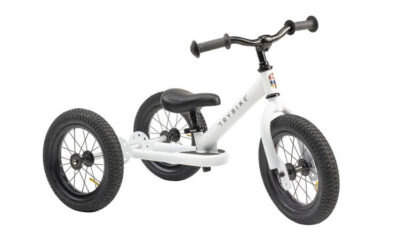
 Toys12 months ago
Toys12 months ago15 of the Best Trike & Tricycles Mums Recommend

